For anyone who has been growing plants for a while, the concept of ‘ballasts’ will not be a new one. However, growers who are just entering the markets might get confused as to what ballasts are and why do they need one – especially if they are gen-next growers who grow only via LED lights which don’t even need ballasts! Nonetheless given that HID and other older forms of light still continue to dominate the markets and that there are a large number of growers still using them, we thought it would be a good idea to give our readers a crash course on grow light ballasts and everything that they need to know about them!
Growing your plants indoors is an art as well as science – and given its scientific nature, we insist that you must know everything even though you might not choose to use lights with ballasts. This is of particular importance if you are using a grow light where you need to buy a separate ballast – because then you will need to know exactly what you are going to buy.
Over the course of this article, we shall be taking a closer look at what a ballast is and what is its primary function in a grow light. Post that, we shall discuss all the different kinds of ballasts that are available in the markets and how you can choose the one that suits your needs the best. We will also take a look at how to install a ballast in an easy way before heading into a discussion about whether ballasts are going to be of any use in the future as LED lights are dominating the markets. Post that, we shall answer some Frequently Asked Questions about grow light ballasts before we conclude.
What Are Grow Light Ballasts?
To understand what a ballast is and what it does, you will need to understand a little bit of the science that powers the grow lights at first. When you look at these lights, grow lights (especially the HID lights and fluorescent lights) are low resistance devices when you switch them on – however, they need to be powered by a higher voltage. A ballast is the perfect device to provide both these things to your light – a low resistance as well as a high voltage. The primary job of the ballast is to ensure that the grow light receives only the amount of current that it requires and nothing more that might overburden it.
HID grow lights come in two variants – the first one being High-Pressure Sodium lamps. When you power on your grow light, the ballast provides the right voltage for the sodium inside it to melt and vaporize. Ballasts are critical here because they function as a regulatory part. Had you had no ballast in your arc when you turn the power on, the intensity with which the voltage is being provided to the grow light would continue to increase, and eventually it would be too much for your bulb to handle and it would blow up. A ballast ensures that such a thing does not happen.
Ballasts are also ‘smart’ devices. Not ‘smart’ in the modern sense but smart enough to know how much power your bulb needs at different phases. When you are starting off your grow light, HPS lights need a high flow of voltage to power up but it then has to be regulated. Ballasts ensure that such a flow is controlled in the right way. Furthermore, when High-Pressure Sodium grow lights and Metal Halides begin to grow older, they tend to need more power to provide the same kind of lighting as they did earlier – a ballast can sense that and provide them with the right amount of power that they need.
Grow light ballasts are also a good safety mechanism. The moment it begins to feel that your bulb is consuming way too much power than it should, it would automatically shut it down. This usually happens when you’ve used your HID grow lights for a few years and they have maxed out their lifespan. Ballasts automatically shut the bulb and when you try and turn them on again, the ballast would again turn them off in a while – this is when you know its time to get hold of a new grow light for your indoor plants.
What are the Different Kinds of Grow Light Ballasts?
Broadly speaking, there are three different kinds of grow light ballasts:
- Electronic Ballasts
- Magnetic Ballasts
- Digital Ballasts
Out of these three, the first two are quite critical while the third one is a term that is often thrown around but we rarely get to see them. Nonetheless, let us take a closer look at all three of these grow light ballasts:
1. Magnetic Ballasts
These are the oldest kinds of ballasts and have been around since as long as there have been High-Intensity Discharge (HID) lights. These ballasts are of a very simple nature and are essentially a magnetic coil made out of a large wire coiled around sheets made out of steel. These are somewhat of a ‘heavy-duty’ device that has been known to last for quite a long time but on the other hand, they are also quite bulky and tend to heat up very easily. Another major disadvantage of magnetic ballasts is that you need a 400W magnetic ballast for a 400W light and an 800W ballast for an 800W light (and so on and so forth). You need size-specific ballasts for the kind of grow light that you are using which is not something that modern-day growers are comfortable with.
2. Electronic Ballasts
When it comes to electronic ballasts, you will see that this is quite a different setup in comparison to what we have seen above in magnetic ballasts. While we have seen that magnetic ballasts tend to carry wires around steel sheets these newer ballasts consist of semiconductors and microchips which help them provide and regulate the high amounts of voltage needed by the HID lights. Considering that there’s no wire and steel inside them and it is mostly made out of chips and semiconductors, this is a much smaller kind of a ballast and doesn’t even heat up as much as the older magnetic ballasts do. One of the biggest advantages of getting an electronic ballast over a magnetic ballast is that they are switchable in nature and unlike the former, you don’t really need two different ballasts to switch from HPS light to MH lighting. Most electronic ballasts also support dimming the light which is another cool feature that you do not get in the magnetic variants. Hence, these are the kinds of grow light ballasts that the modern-day growers now prefer to use if they are using HID grow lights.
3. Digital Ballasts
Digital ballasts are just an improvement over electronic ballasts. While many ballasts in the markets today claim to be ‘digital’ they are still rebranded electronic ballasts. Nonetheless, the difference between electronic and digital ballasts is that the latter carry in them a microprocessor. If your ballast does not have a microprocessor it is not a digital ballast. The core advantages of using these kinds of ballasts is that they are considerably smaller in size even when compared to the electronic ballasts. Some of these ballasts can operate up to four lights at once. They also tend to heat up quite less. However, the biggest benefit of using a digital ballast to use grow lights is that it allows you to regulate the voltage between 400W to 1000W and that growers can adjust the intensity of the light any time they wish to. These digital ballasts often tend to be expensive in comparison to the other two forms of grow light ballasts.
What are HID Grow Lights?
Since we are talking so much about HID grow lights here, here’s quick introduction to what these lights are. HID lights stand for High-Intensity Discharge grow lights and they come in two variants – High-Pressure Sodium (HPS) grow lights and Metal Halides (MH). A combination of both of these lights is essential for growers to grow their plants, especially if they are growing something like marijuana.
1. Metal Halides
These lights provide your plants with a cool blue lighting which is important for their growth in the vegetative phase. The kind of lighting that you get here is the one that you would usually find out in nature in the months of spring or autumn. These lights are great for promoting the process of photosynthesis in your plants, as well as help them grow taller, leafier and help increase the vegetative growth. These bulbs function on the passage of an electric arc amid a mixture of gases like argon, mercury, etc. The average lifespan of these bulbs is close to 10,000 hours.
2. HPS Grow Lights
While the Metal Halide lights provide your plants with the cool blue light that they need during the early phase of their growth, the High-Pressure Sodium (HPS) lamps provide the warm red shades which are important during the flowering phase of the plant’s life cycle. These lights help increase the overall yield per square foot and make sure your plant is producing more flowers which are big and healthy. The concept at which this light operates is pretty much the same as that of the metal halides as an electric arc is passed through gas – but the gas here consists of sodium vapor which gives it the distinct colour that your plants need for vegetative growth. These lights last for about 18000 hours on an average, which is more than the metal halides, but also tend to consume more power and generate more heat than the MH lights.
In order for your plants to get the ideal lighting, you will need to use both these lights based on the phase of growth your plant is in to ensure a healthy growth.
Frequently Asked Questions About Grow Light Ballasts:
We get asked many of these questions over mail or in our comments so we have clubbed them together here for your benefit. Do take a look at some of these FAQs as you might be having similar queries:
1. Do LED grow lights also need ballasts?
The answer to this is pretty simple. LED grow lights do not need a ballast because everything that is needed for the light to function and the voltage to flow and to be controlled is already a part of the primary fixture of the light. Hence, there’s no need to add an extra ballast to the mix.
2. How expensive can ballasts be?
Depending on what all you are getting (just a ballast or an entire kit) you could be looking at anything ranging from about $60 to $250 on an average. The cost varies with what all’s included in the package. Getting simply a ballast would be somewhere around the $60-$100 range.
3. Are ballasts safe to use?
Ballasts are totally safe to use. Specifically, magnetic ballasts as they are designed keeping in mind the standards set by the ANSI (American National Standards Institute). This isn’t exactly the case with the electronic and digital ballasts but those are also generally very safe to use. In fact, not using a ballast is always more dangerous (check out the last question).
4. Which is the best type of grow light ballast?
Technically the answer is digital ballasts because they are the latest and hence the safest, don’t heat up, and are small in size. However, the answer to this truly depends upon the light that you are using, your level of comfort and familiarity with the ballasts, etc.
5. What happens if I don’t use a ballast?
If you don’t use a ballast an unregulated flow of current begins entering your bulb and the supply will continue at an increasing pace till your bulb blows up in the end.
6. How To Get The Best Ballast For Your Light?
The best way to ensure that you are getting just the right kind of grow light ballast for your lighting is by purchasing a complete HID lighting kit – which will include the light and the perfect compatible ballast along with it. Unless you know exactly what you are looking for and are a total ‘pro’ grower, we strongly recommend you to buy a grow light kit which will get you the ideal combination.
Conclusion
When it comes to growing your plants, there are a number of things that growers need to keep in mind. While the bigger worries are about getting the right kind of light, providing the right nutrients, and setting up the perfect growth environment, ballasts are a small part of the system which are very important, and messing that up means you’re straight-up sacrificing your grow light! Hence, we have come out with this guide on grow light ballasts and everything that you need to know about them. We hope that reading this has helped you enrich your knowledge about what ballasts are and why they are important. If there are any more questions, do drop us a mail or let us know in the comments section and we shall get back to you as soon as we can! Till then…
….Happy Growing! 🙂
Table of Contents


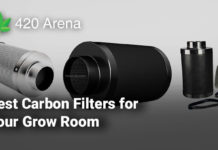
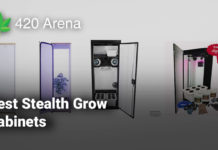
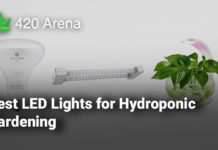

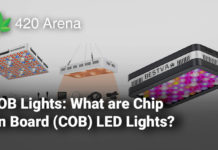


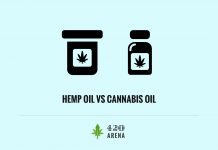



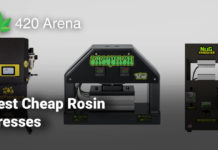
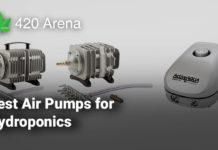
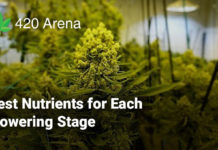
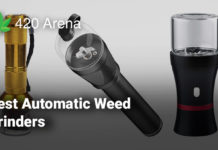
![How to Use Carbon Filters in Your Grow Room [7 Best Carbon Filters for Grow Rooms in 2021] How to Use Carbon Filters in Your Grow Room](https://420arena.com/wp-content/uploads/2020/12/How-to-Use-Carbon-Filters-in-Your-Grow-Room-218x150.jpg)










